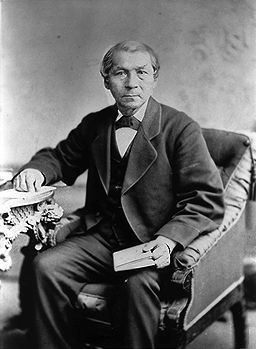Name Henry Steinhauer | ||
 | ||
Died December 29, 1885, Northwest Territories, Canada | ||
Henry Bird Steinhauer (1804, in the Rama Indian settlement, Lake Simcoe, Ontario – 29 December 1885, at Whitefish Lake, Northwest Territory, Canada) was a Canadian clergyman.
Contents

Biography
He was a pure-blooded Chippewa Indian, and received his name of Steinhauer from a German family that adopted and educated him. He accompanied the Rev. James Evans, a Methodist missionary, to the northwest in 1840, and settled at Norway House, where he remained until 1855, and made himself useful to the missionaries as an interpreter. He assisted Evans in inventing and perfecting the Cree syllabic characters, in which nearly all books in the Indian languages are printed in the northwest. He also translated into Cree the Old Testament from the book of Job to the end of the lesser prophets, and most of the New Testament. Steinhauer's native tongue was Ojibwa, which was in the same language group as Cree.
He was ordained a minister in 1858, and lived at Whitefish Lake, where he remained for the rest of his life. In 1875, he began to assert his Native American heritage more strongly. He withdrew from the missionary society he belonged to — Missionary Society of the Wesleyan Methodist Church in Canada — though he continued with the religion and his missionary work. He sent a rare critical letter to the Society, which was published.
Family
In 1840, he married Jessie Joyful (Seeseeb Mamanuwartum), and they had ten children.
Legacy
Steinhauer, Edmonton, was named after him.
